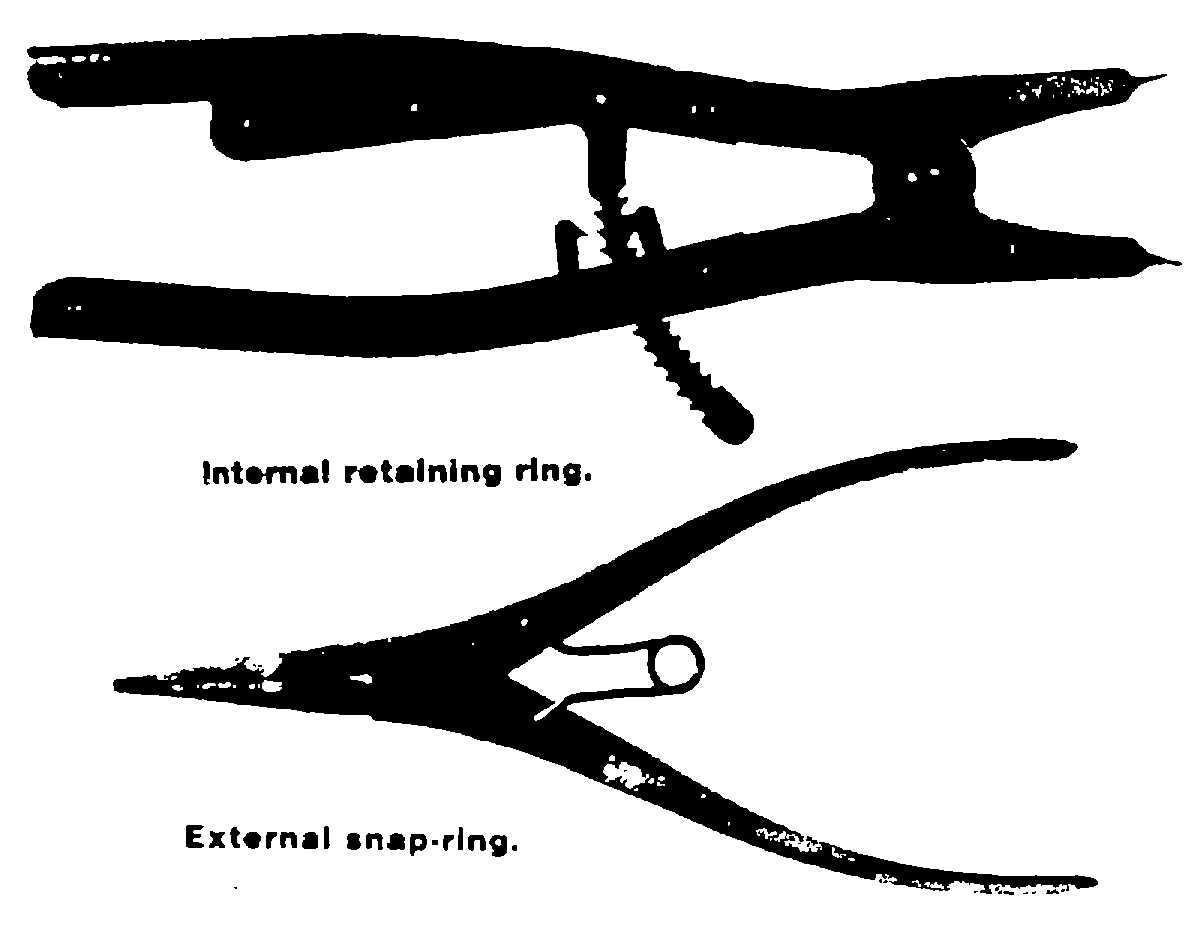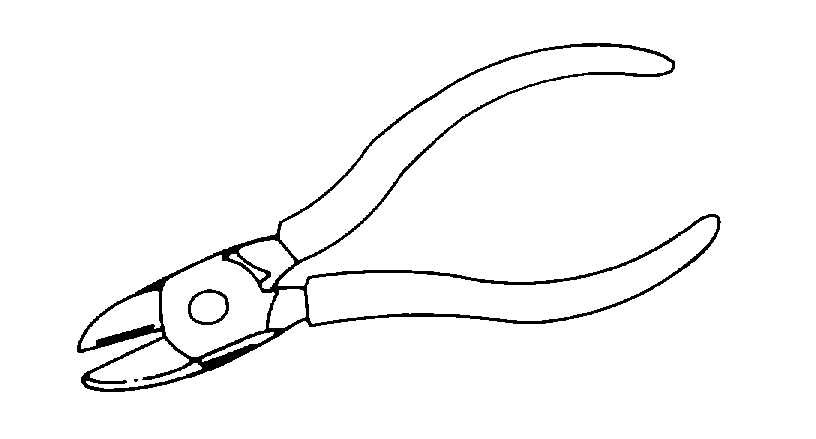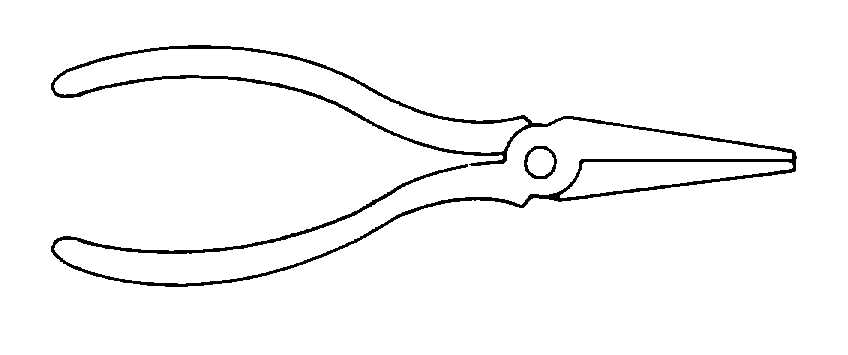TM 1-1500-204-23-9
Figure 4-39. Adjustable Hook Spannner Wrench
Figure 4-40. Pliers, Retaining Ring
4-5. Pliers. Pliers are so constructed that a force or
pressure applied to the handles is intensified through the
pivot point to the jaws. This leverage enables the
mechanic to hold materials which the hand alone is not
strong enough to hold.
a.
Types. Pliers are made in various types for
various uses. The more common types and their uses
are listed in the following paragraphs:
(1)
Slip-joint pliers. The slip-joint combination
pliers shown in figure 4-41 have serrated (grooved)
jaws, with a rod-gripping section, a cutting edge, and a
pivot. The serrated jaws and rod-gripping section are
used to hold objects. The cutting edge permits the
cutting of soft wire and nails. However, cutting hard
materials or large gauge wire will spring the jaws,
making the pliers useless. The pivot is used to adjust
the jaw opening to handle large or small objects.
(2)
Diagonal cutting pliers. The diagonal
cutting pliers, shown in figure 4-42, have a fixed pivot.
The jaws are offset by about 15-degrees and are shaped
to give enough knuckle clearance while making flush
cuts. The diagonal cutting pliers are used for cutting
small, light objects such as wire, cotter pins, and similar
items. These pliers are not to be used to hold or grip
objects.
(3)
Long-nose pliers. Long nose pliers,
shown in figure 4-43, are used to reach places
inaccessible to the fingers, such as inserting cotter pins
in close places. They are also used to bend small
pieces of metal.
(4)
Flat-nose pliers. The flat-nose pliers have
flat serrated jaws, a fixed pivot, and curved handles
which may have insulated sleeved. These pliers are
used to bend light sheet metal and wire, and are shown
in figure 4-44.
Figure 4-41. Slip-Joint Pliers
Figure 4-42. Diagonal Cutting Pliers
Figure 4-43. Long-Nose Pliers
4-14









